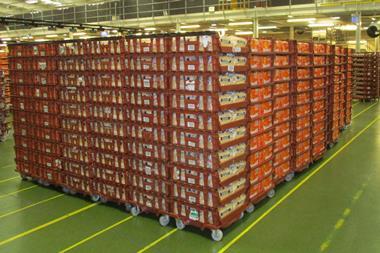John Mitchell, a partner at law firm Blake Morgan, offers advice on complying with the Provision and Use of Work Equipment Regulations
Large-scale machinery and specialised equipment are an integral part of the food industry, and managers will be no strangers to health and safety requirements.
However, a recent case in which Warburtons was fined £1.9m after a worker’s arm became trapped between running conveyor belts underlines the need to be vigilant about safe use of such equipment. Warburtons pleaded guilty to breaching Regulation 11 of the Provision and Use of Work Equipment Regulations 1998 (PUWER) and, in addition to the substantial fine, was ordered to pay full costs of £21,459.
A comparatively smaller incident was reported earlier this year when Penrith-based Bells of Lazonby Limited was fined more than £70,000 after two workers suffered hand lacerations while operating machinery.
Such fines, as well as the potential reputational damage, underline the importance of PUWER compliance – and the need for every manager at every level of a food business to understand the fundamentals of the legislation.
Bearing in mind that Health & Safety Executive (HSE) research shows conveyors account for 30% of injuries in the food industry, against only 10% for manufacturing equipment, what are the principles that underpin compliance with PUWER?
The cardinal principle of PUWER is that ‘using’ work equipment includes not just operating it, but also repairing, modifying, maintaining, servicing and cleaning. First and foremost, PUWER requires that equipment is suitable for its intended use and, crucially, is safe for use, maintained in a safe condition and inspected regularly.
Employees using equipment must have received adequate information, instruction and training and be aware of suitable health and safety measures, such as emergency stop devices, warning devices, and clearly visible markings. Machinery must also be capable of being safely isolated from energy sources.
As a manager or business owner, it is your responsibility to manage risks from equipment. Here are a few key starting points:
- Ensure work equipment is in good repair and maintained in an efficient state.
- Equipment must be inspected to ensure faults are detected in good time and maintenance logs should be kept up to date. If machinery is interlocked, the interlocks should be inspected at the beginning of each shift and the inspection recorded.
- Effective measures must be taken to prevent access to dangerous parts of machinery. Machinery purchased in the EU will be CE marked, which should be a guarantee that it has suitable fixed or interlocked guarding. However, incidents frequently occur due to modifications of guarding to suit local limitations presented by the shop floor, such as space or layout. A modified guard should be a red flag to a health and safety team, but I handled a case a couple of years ago in which an inadequate modification had been overlooked in 12 annual risk assessment reviews.
- Adequate and clear health and safety information is paramount. All who have contact with the machinery should have received adequate training and refreshers, which should be recorded.
Training employees is great for the employees, but not much use if you can’t prove it. Frequent changes to agency cleaning staff present a particular challenge. Consider including the risk assessment as part of the training. In a case last year, an employee defeated a guard and put his hand inside a bag sealer to remove a blockage. He would not have done that if he had realised that inside, in addition to the heat jaws he thought he could avoid, there was a large blade for slicing each sealed bag from the next.
In my experience, even businesses that are well-intentioned with regard to health and safety during the operational mode of machinery frequently fall short under other modes – for example, cleaning or maintenance. Being asked to address unusual circumstances, such as a shop-wide deep clean due to the detection of a pathogen, often seems to defeat a normally competent team, too.
Yet the pay-off for robust and rigorous health and safety will always be worthwhile – safe employees, an effective and efficient bakery and avoidance of lengthy and potentially costly investigations by HSE.





























No comments yet